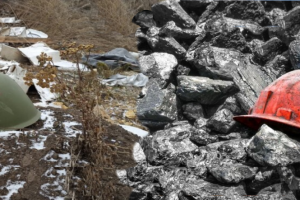Critical time for the Ukrainian Energy System: What policy options and solutions Ukraine has to sustain the double challenge of winter and Russian aggression?
During the event, experts and analysts discussed the response of the Ukrainian government, local authorities, and energy companies to the consequences of Russian attacks. The discussion also covered the key vulnerabilities and strengths of the Ukrainian energy system, ways for the EU to contribute to its stability, and the parameters corresponding to the optimistic and pessimistic scenarios during the winter season.
This event was organized by the Democratic Initiatives Foundation in partnership with and with the financial support of the Heinrich Böll Foundation (Kyiv, Ukraine).

Mariia Zolkina,Head of Regional Security and Conflict Studies, Ilko Kucheriv Democratic Initiatives Foundation, Kyiv, and moderator of the meeting, pointed out that the topic of Ukraine’s energy security merits discussion:
«Most probably, the consequences of the ongoing destruction of critical infrastructure of Ukraine is one of the most popular questions which come to Ukrainian experts from international media. At the same time, this is something which still does not have enough coverage in... Western informational space».

Iryna Kosse, Senior Fellow at Ukraine and Eastern Europe Programme at GLOBSEC, Slovakia, notes that Russia has chosen to focus on targeting infrastructure that distributes energy, rather than infrastructure that produces energy:
“Currently, there is a big need for equipment for repairing those systems – generators, transmitters”.
The good news is that most of this equipment oftentimes takes only several days to repair, unlike the damage that could be done to power stations. On the other hand, Ukraine is running out of spare parts to perform these repairs and some of the equipment Ukraine relies on is so old that it is not produced anymore.
Thus, finding new equipment that is compatible with the Ukrainian systems is the major government priority. Some of the old equipment from Europe that is in storage but no longer in use is helpful both when it comes to the electricity infrastructure and the heating infrastructure that requires electric components for tasks, such as pumping water.
The government of Ukraine as well as the Presidential Office are actively communicating with partners to find the necessary spare parts, but municipalities and businesses are also involved in the process.
Businesses are particularly impacted by the blackouts and are less optimistic about the short term than they used to be. However, in the 3-6-month term, there is more confidence and willingness to adapt among businesses:
“It’s really difficult to predict what will happen because Russian attacks are unpredictable. So, we can assess the situation with current damages…, but you can never say what the next target will be”.
Still, the expert believes that the Ukrainian electrical infrastructure has some considerable resilience and can transfer power between regions, but time and equipment are needed to keep it going. She notes that the provision of effective antiaircraft and missile defense is a more important priority than the provision of spare parts because it helps to preserve the existing infrastructure in the first place.

Maciej Zaniewicz, Senior Analyst at Forum Energii, Poland, says that most of the European observers, including himself, used to believe that Ukraine’s heating system would face the most pressure, rather than Ukraine’s electric infrastructure:
“I thought that it is virtually impossible to really hit Ukraine’s energy system because after the Russian invasion the drop of demand for electricity was about 30%, so Ukraine had a lot of energy in reserve”.
The targeting of infrastructure that distributes energy rather than the infrastructure that produces it was a “creative” decision by Russia that explains why Ukraine’s electrical infrastructure is struggling and had to cease its export operations.
The EU and individual states, such as Israel, Poland, and Germany are setting up initiatives to help Ukraine, but the difficulty is the incompatibility of some of the European supplies with the Ukrainian equipment. There is an understanding among Ukraine’s partners, especially in Poland, that the attacks against Ukraine's infrastructure also aim to hurt Europe:
“We all know that one of the reasons Russia decided to target Ukraine’s electricity system is to provoke a humanitarian crisis in Ukraine and to provoke the next wave of migrants to the European countries”.
The EU is also preparing to face the long-term challenges to its own energy system beyond the upcoming winter.
Zaniewicz agrees with Kosse that antiaircraft and missile defense can help to decrease Ukraine’s need for spare parts and to protect the existing assets.

Oleksandr Kharchenko, Managing Director at Energy Industry Research Center (EIR Center), like other experts, emphasizes the need for spare parts to maintain the functionality of Ukraine’s energy infrastructure. He emphasizes that it has already sustained significant damage of up to 40% of its energy-sending capacity:
“We have nearly 900 rockets and drones which were sentspecifically to crush our energysystem. The Moscow regime attacked all our power stations and more than 70% of our key transformation substations and power grid”.
He argues that Russia targets the routes between the stations and consumers because it has the Soviet documents about this infrastructure. Its ability to target major routes has caused blackouts and forced Ukraine to rely on smaller reserve routes. Most repairs take between 2 days and a month, but when transformers are hit the challenge is more severe because they take between 9 months and 2 years to produce.
Ukraine does have a limited number of spare parts, but it is likely to run out of stock completely after several 50-rocket salvos by Russia,. That is why Ukraine has reached out to partners, such as the U.S., Canada, Korea, and most notably Europe for help and provided lists of specific equipment that’s needed - most of this equipment is compatible with the Ukrainian system. In particular, Ukraine is looking for old, Soviet-era transformers that are uniquely compatible with the Ukrainian system which uses transformers with 750 or 330 voltage, whereas newer European transformers have the voltage of 400 or 220.
Kharchenko describes three different scenarios that Ukraine may face. If Russia discontinues its terror, an optimistic scenario, Ukraine’s system can continue functioning at its current capacity without significant interruptions. In case moderate attacks continue, there will be more rolling blackouts, but a complete blackout is unlikely due to the resilience of the Ukrainian system. The worst-case scenario would be a complete blackout, but it is unlikely because Russians would require classified information and more gunpower to achieve it:
“I believe that the reality of a real blackout is not more than 10%... Without tripling their effort to hit us, they cannot obtain this result”.
Finally, Kharchenko says that the situation at the Zaporizhzhia Nuclear Power Plant is relatively stable but tense. The plant requires electricity to continue its cooling processes and although 2 of the 4 power lines connecting the plant to the rest of Ukraine’s energy infrastructure are permanently destroyed and cannot be accessed by Ukraine, the other 2 are regularly serviced after Russia damages them – then, the situation repeats itself. When both of these lines are down, the plant gets power from diesel generators, which the Russians do not seem to resupply properly.
When answering one of the moderator’s questions, Kharchenko said that the gas and oil transportation systems of Ukraine are in order. Ukraine would not be held responsible should Russia damage these systems, which would constitute an attack on Hungary.








